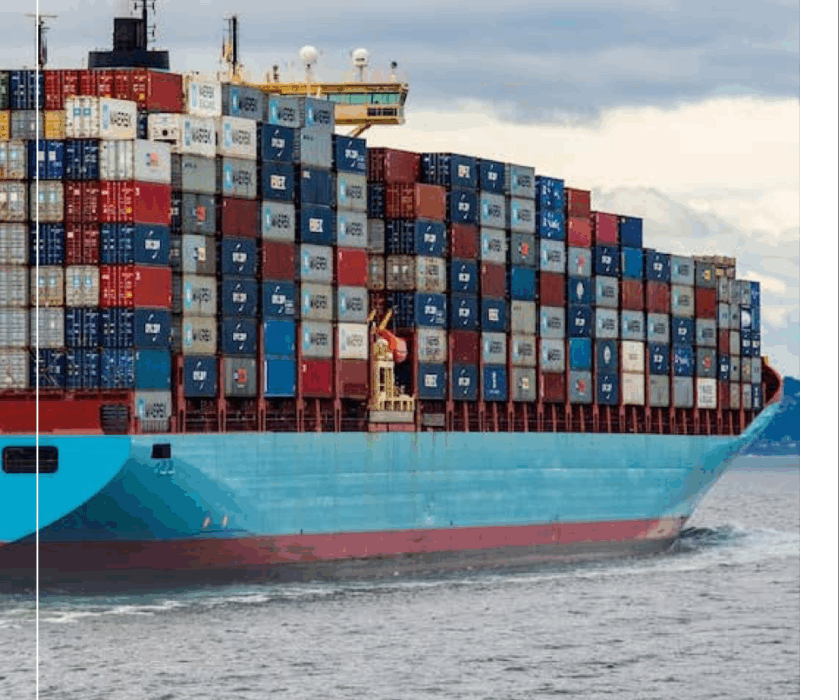Introduction
At North Star Global, we are committed to empowering businesses to navigate the complexities of global trade. Container terminals in the United States are critical hubs in the global supply chain, handling approximately 80-90% of sea-shipped goods. As of May 14, 2025, the growth of these terminals is reshaping the logistics landscape, driven by rising trade volumes, larger vessels, and evolving consumer demands. This article explores the importance of expanding US container terminals, their economic impact, challenges, and opportunities for businesses, offering insights to help our clients thrive in this dynamic environment.
The Role of Container Terminals in Global Trade
Container terminals are specialized facilities where cargo containers are transferred between ships, trucks, and trains, serving as vital links between maritime and inland transport. In 2024, US ports handled over 50 million twenty-foot equivalent units (TEUs), with the Port of Los Angeles leading at 10.3 million TEUs, followed by Long Beach, New York/New Jersey, and Savannah. These terminals drive economic growth, with the Port of Los Angeles alone generating 3 million jobs and $265 billion in annual revenue. Efficient terminals ensure smooth cargo flow, keeping businesses operational and consumer goods accessible.
The growth of container terminals is fueled by several factors:
-
Rising Trade Volumes: Globalization and e-commerce, projected to reach $7.4 trillion globally in 2025, have increased containerized trade, particularly with Asia. The Ports of Los Angeles and Long Beach handle 40% of US container imports.
-
Larger Vessels: The expansion of the Panama Canal and the rise of ultra-large container vessels (ULCVs) carrying up to 24,000 TEUs require deeper channels and advanced infrastructure.
-
Supply Chain Diversification: US-China trade tensions, with tariffs at 30% under a 2025 truce, have shifted sourcing to Southeast Asia and India, increasing East Coast port activity.
Economic and Strategic Importance
Expanding container terminals is crucial for the US economy and global competitiveness:
-
Job Creation and Economic Impact: Ports like Charleston, supporting one in 10 South Carolina jobs, and Houston, generating 3.2 million jobs nationwide, are economic engines. The Port of Miami contributes $43 billion annually to Florida’s economy. Terminal expansions, such as Virginia’s $750 million project increasing capacity by 46%, create jobs and boost local economies.
-
Supply Chain Efficiency: Efficient terminals reduce delays, lowering costs for businesses and consumers. Delays at congested ports, as seen in 2021 when over 100 ships waited at Los Angeles and Long Beach, drove inflation and disrupted supply chains. Investments in terminals like Savannah’s Jasper Ocean Terminal, set to be the largest US port by 2035, enhance throughput and reliability.
-
Global Competitiveness: Fast turnaround times make US ports attractive to international shippers. The Charleston Harbor deepening, completed in 2021, allows 24/7 access for post-Panamax ships, strengthening competitiveness.
-
Sustainability and Innovation: Terminals are adopting green technologies, such as electric cranes and carbon-neutral operations, aligning with consumer and regulatory demands. The Port of Long Beach’s Green Port Policy reduces emissions, enhancing sustainability.
Key Developments in US Container Terminals
Recent investments underscore the commitment to terminal growth:
-
Port of Los Angeles: Handling 20% of US imports, the port has seven container terminals and is investing in automation, with 62 automated hybrid straddle carriers added in 2022.
-
Port of Savannah: The largest single-terminal facility in North America, Savannah moved 4.6 million TEUs in 2020 and plans to increase capacity by 750,000 TEUs with the Jasper Ocean Terminal by 2035.
-
Port of Virginia: A 2020 expansion increased capacity by 1 million TEUs, with 90 semi-automated cranes at Norfolk International Terminals enhancing efficiency.
-
Port of Charleston: The Hugh K. Leatherman Terminal, opened in 2021, is the first greenfield terminal since 2009, boosting big-ship capabilities.
-
Port of Houston: A $750 million upgrade through 2027 at Bayport Container Terminal will handle larger vessels, supported by robust rail and highway networks.
These developments address the need for greater capacity, deeper drafts (13+ meters for post-Panamax ships), and advanced equipment like ship-to-shore cranes.
Challenges in Terminal Expansion
Despite their importance, growing container terminals face challenges:
-
Port Congestion: Labor shortages and imbalanced container flows (e.g., 75% of containers left Los Angeles empty in July 2021) cause bottlenecks. A potential International Longshoremen’s Association strike in January 2025 could exacerbate disruptions.
-
Capital Intensity: Terminal expansions require significant investments, such as the $1.3 billion Bayonne Bridge raising at New York/New Jersey. Automation increases costs but is critical for efficiency.
-
Land Constraints: Terminals require expansive land for storage, often pushing facilities to urban peripheries. Stacking containers densely, as with automated gantry cranes, maximizes space but adds complexity.
-
Sustainability Pressures: Ports must comply with noise, light, and emission regulations. Upgrading to eco-friendly equipment is costly but necessary to meet 2025 sustainability standards.
-
Hinterland Connectivity: Efficient road and rail links are vital. Congested local roads, as seen in 2022 when $1.5 billion in trade awaited rail at Los Angeles/Long Beach, hinder performance.
Opportunities for Businesses
At North Star Global, we see terminal growth as an opportunity for our clients:
-
Enhanced Market Access: Expanded terminals like Savannah and Virginia offer faster access to inland markets, benefiting e-commerce and manufacturing sectors.
-
Cost Optimization: Efficient terminals reduce terminal handling charges and demurrage fees. Our logistics experts help clients navigate these costs.
-
Sustainability Alignment: Partnering with green terminals supports corporate sustainability goals, appealing to eco-conscious consumers.
-
Supply Chain Resilience: Diversifying port strategies, leveraging Gulf and Great Lakes ports, mitigates risks from congestion or strikes.
-
Technology Integration: Tools like South Carolina’s GO!Port system provide real-time cargo tracking, enhancing visibility and planning.
North Star Global’s Strategic Approach
North Star Global is your trusted partner in capitalizing on US container terminal growth. Our services include:
-
Real-Time Analytics: Our platform optimizes routing and cost management, leveraging terminal efficiencies.
-
Customs and Compliance: We navigate complex regulations, ensuring smooth cargo flow.
-
Sustainable Logistics: We partner with green terminals to offer carbon-neutral shipping options.
-
Global Network: Our expertise spans US ports and beyond, supporting cross-border trade.
Conclusion
The growth of US container terminals is a cornerstone of economic prosperity and global trade resilience. By addressing rising trade volumes, larger vessels, and sustainability demands, terminals like Los Angeles, Savannah, and Charleston drive jobs, efficiency, and competitiveness. Despite challenges like congestion and capital costs, strategic investments and innovation position US ports for success. At North Star Global, we empower clients to harness these opportunities, ensuring their businesses thrive in the evolving logistics landscape.


